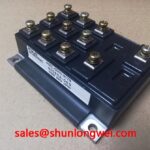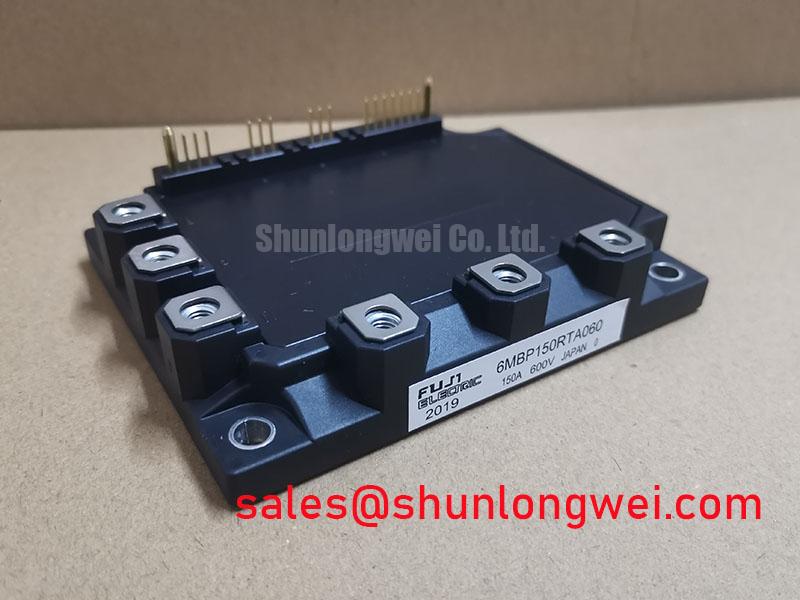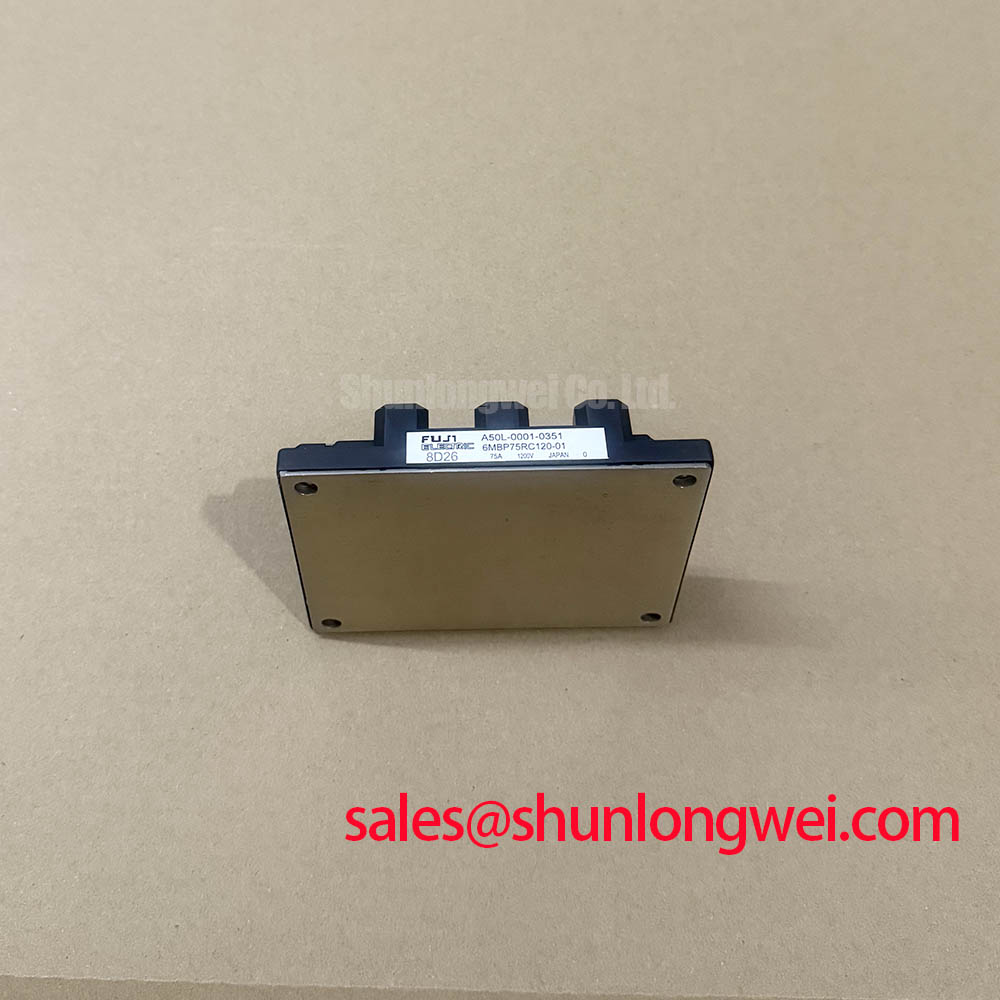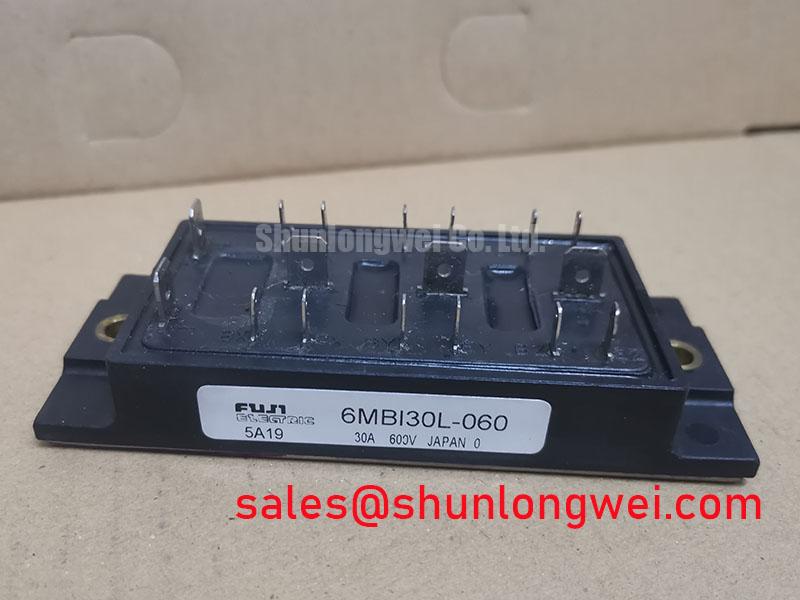6DI85A-060 Datasheet, Specs & Applications | 600V 85A IGBT Module
An Engineering Review of the Fuji Electric 6DI85A-060 IGBT Module
Content last revised on October 12, 2025.
This page provides a detailed technical analysis of the Fuji Electric 6DI85A-060, a 6-in-1 IGBT module designed for three-phase inverter applications. It offers a highly integrated solution engineered to optimize thermal performance and simplify the design of compact, reliable industrial motor drives. Featuring core specifications of 600V | 85A | VCE(sat) 2.7V max, this module delivers robust electrical performance and streamlined thermal management. Key engineering benefits include reduced system complexity and enhanced operational reliability. This module directly addresses the challenge of building efficient and durable power stages for AC motor control. For industrial drive systems prioritizing thermal stability and a compact footprint in the 200-240V AC range, the 6DI85A-060 presents a well-balanced solution.
Key Parameter Overview
Decoding the Specs for Enhanced Thermal Reliability
The technical specifications of the 6DI85A-060 are foundational to its performance in demanding power conversion systems. The following table highlights key parameters from the official datasheet, paired with an interpretation of their direct engineering value for design and system integration.
| Parameter | Test Condition | Value | Engineering Value & Interpretation |
|---|---|---|---|
| Collector-Emitter Voltage (Vces) | Vge = 0V | 600V | Provides a sufficient voltage margin for three-phase inverters operating on 200V-class AC lines, ensuring reliability against voltage transients. |
| Continuous Collector Current (Ic) | Tc = 80°C | 85A | Enables control of medium-power AC motors, typically in the 15 kW to 22 kW range, depending on switching frequency and cooling efficiency. |
| Collector-Emitter Saturation Voltage (VCE(sat)) | Ic = 85A, Vge = 15V | 2.2V (typ) / 2.7V (max) | What is the benefit of a low VCE(sat)? Lower voltage drop during conduction translates directly to reduced power loss (heat), improving overall system efficiency and easing heatsink requirements. |
| Forward Voltage Drop (Vf) | Ie = 85A, Vge = 0V | 2.1V (typ) / 2.6V (max) | Indicates the efficiency of the integrated freewheeling diode (FWD), which is critical for minimizing losses when handling reactive currents from inductive motor loads. |
| Thermal Resistance (Rth(j-c)) | IGBT, per chip | 0.36 °C/W (max) | This value is analogous to the width of a highway for heat; a lower number signifies a more efficient path for heat to travel from the semiconductor junction to the case, which is crucial for preventing overheating. |
| Isolation Voltage (Viso) | AC, 1 minute | 2500V | The integrated isolation between the module's live terminals and its baseplate simplifies assembly by removing the need for external insulating materials, improving heat transfer and long-term reliability. |
Application Scenarios & Value
Achieving System-Level Benefits in Industrial Motor Control
The 6DI85A-060 is purpose-built for three-phase power conversion, making it an excellent component choice for low-to-medium power industrial systems. Its primary application is in the power stages of Variable Frequency Drives (VFDs) used to control the speed and torque of AC induction motors.
Consider a high-fidelity engineering scenario: designing a compact VFD for a materials handling conveyor system. The key challenge is to deliver reliable torque control while minimizing the drive's physical footprint and ensuring it can withstand the repetitive start-stop cycles. The 6DI85A-060 addresses this directly:
- Integration Simplifies Design: By integrating all six IGBTs and their corresponding freewheeling diodes for a three-phase bridge into one module, the 6DI85A-060 drastically reduces the complexity of the power stage layout. This consolidation minimizes stray inductance, reduces component count, and shrinks the required PCB area, contributing to a more compact final product.
- Thermal Performance Ensures Durability: The module's specified thermal resistance (Rth(j-c)) and low VCE(sat) work in tandem to manage heat effectively. In a conveyor application with frequent motor starts, which generate current peaks, efficient heat dissipation is critical for long-term reliability and achieving high Power Cycling Capability. The module's robust thermal design ensures the IGBT junctions remain within safe operating temperatures, preventing premature failure.
While this model is well-suited for applications requiring up to 85A, for systems demanding higher current handling in a similar package, the related 6DI100A-060 provides a 100A capability.
Frequently Asked Questions (FAQ)
How does the integrated 6-in-1 configuration of the 6DI85A-060 benefit the manufacturing process?
The 6-in-1 topology streamlines assembly by replacing multiple discrete components with a single, pre-tested module. This reduces soldering points, simplifies inventory management, and decreases the likelihood of assembly errors, ultimately lowering manufacturing time and cost.
What is the significance of the isolated mounting base in the 6DI85A-060 for system design?
The 2500V isolation rating of the baseplate eliminates the need for a separate, thermally-resistive insulating pad between the module and the heatsink. This simplifies the mechanical design, ensures a more direct and reliable thermal path, and reduces overall assembly complexity.
How does the Rth(j-c) of 0.36 °C/W directly impact heatsink selection?
A lower thermal resistance from junction to case means heat is transferred away from the silicon more efficiently. This allows engineers to either use a smaller, more cost-effective heatsink for a given power dissipation or to operate the device at a higher power level with the same heatsink, providing greater design flexibility and potential for increased power density.
Is the 6DI85A-060 suitable for hard-switching Pulse Width Modulation (PWM) applications?
Yes, the module is designed for hard-switching topologies commonly used in VFDs. The datasheet provides detailed switching loss characteristics (Eon, Eoff, Err) that are essential for calculating total power dissipation and ensuring thermal stability in systems utilizing Pulse Width Modulation (PWM) techniques.
What does the square RBSOA (Reverse Bias Safe Operating Area) imply for motor drive applications?
A square RBSOA indicates that the IGBT can safely turn off high currents even at high collector-emitter voltages. This is a critical measure of ruggedness, particularly in motor drive applications where the inductive load can cause significant voltage overshoots during switching transients. It provides a higher margin of safety against device failure.
Technical Deep Dive
An Analysis of Conduction Loss and Thermal Management
A critical aspect of power module selection is a thorough understanding of its thermal behavior under load. The 6DI85A-060's performance is fundamentally tied to its collector-emitter saturation voltage (VCE(sat)). With a typical VCE(sat) of 2.2V at its nominal 85A current, the module is optimized to minimize conduction losses—the primary source of heat generation in low-to-moderate frequency applications like motor drives.
Think of VCE(sat) as electrical friction. Just as lower friction allows a mechanical part to move with less wasted energy, a lower VCE(sat) allows current to flow through the IGBT with less energy wasted as heat. This characteristic, combined with the module's efficient thermal resistance path, forms the core of its value proposition. The direct, isolated mounting to a heatsink further enhances this, creating an efficient thermal system that is less prone to degradation over time compared to solutions requiring external insulators, which can crack or lose effectiveness. This focus on minimizing heat generation and maximizing its removal is key to building reliable, long-lasting power electronics.
From a Design Engineer's Perspective
Evaluating the Fuji Electric 6DI85A-060 goes beyond its primary ratings. For engineers developing industrial automation systems, this module represents a pragmatic approach to power stage design. Its value lies in the balance between electrical performance, thermal efficiency, and mechanical simplicity. The integration of a full three-phase bridge into a single, thermally efficient package allows design teams to focus on higher-level challenges—such as implementing advanced motor control algorithms or refining user interfaces—rather than on the complexities of discrete power device layout and thermal interfacing. This simplification is a direct enabler of faster development cycles and more reliable end products.















